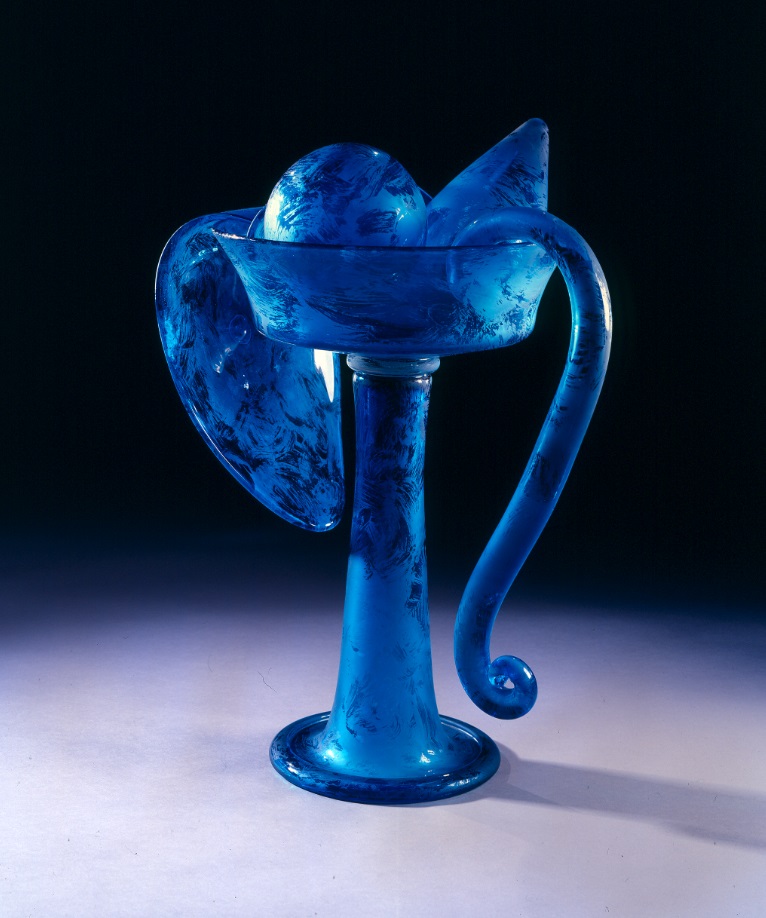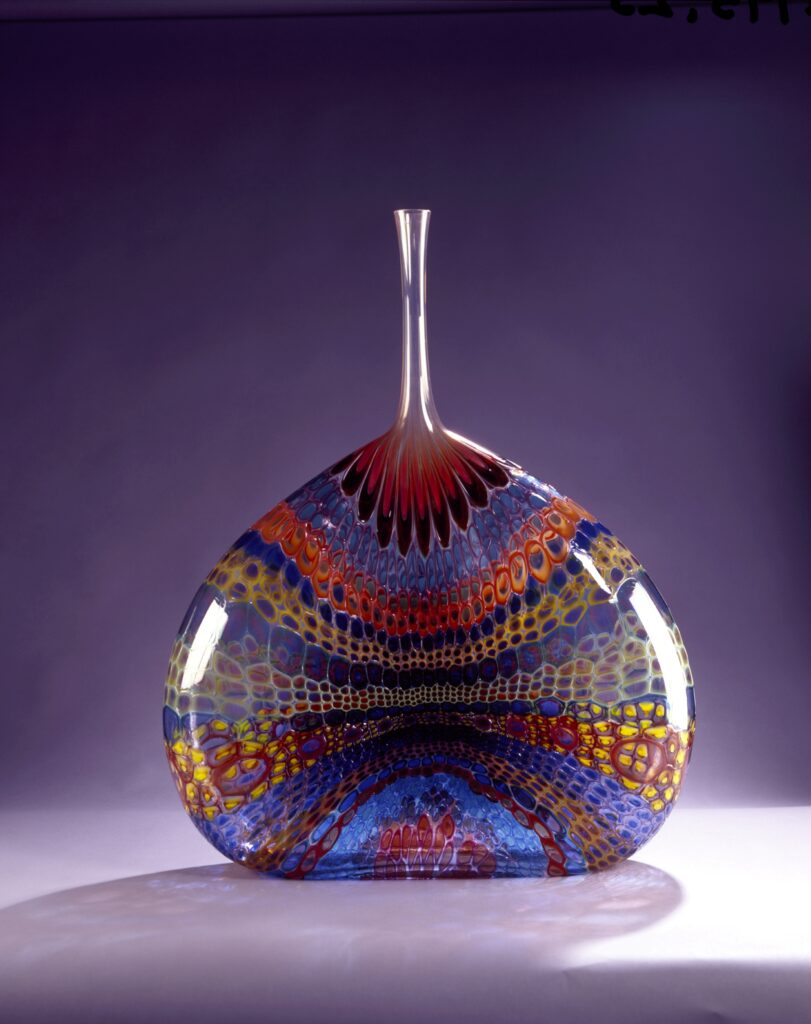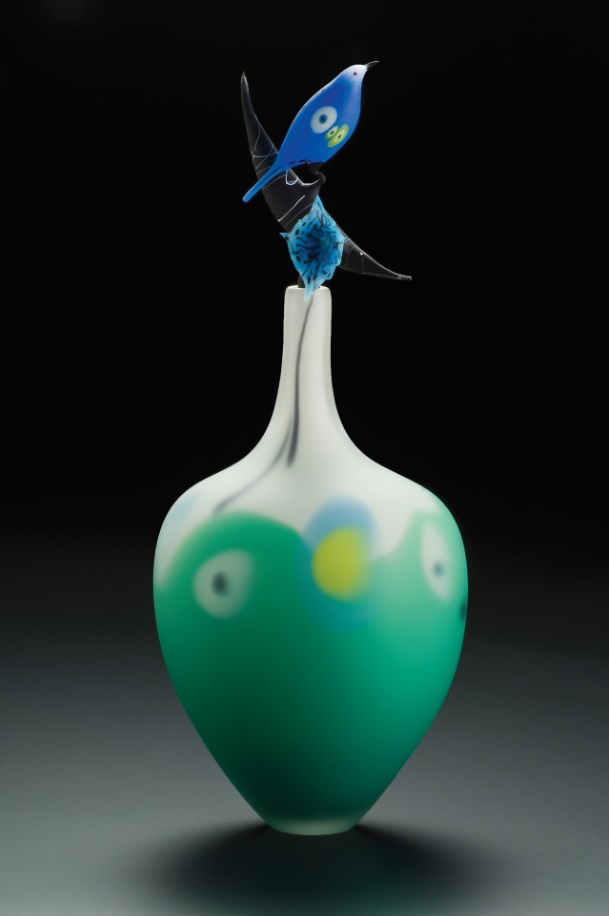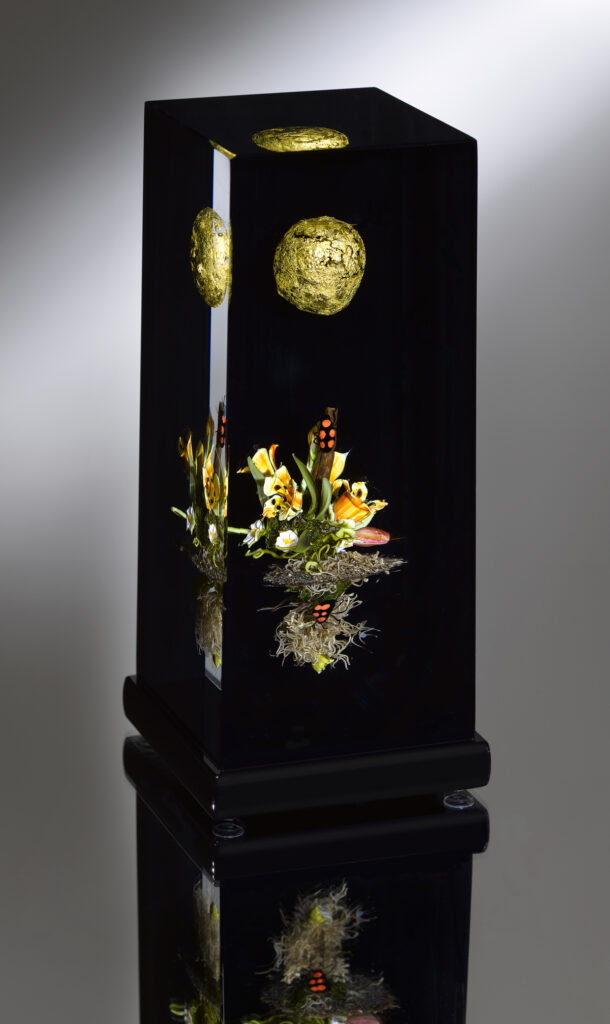The American Glass collection showcases stunning examples of glass artistry, including works by renowned artists like Dale Chihuly, Harvey Littleton, and William Morris. These pieces highlight innovative glassmaking techniques, from intricate vessels to large-scale installations. With a dazzling array of colors and forms, the collection celebrates glass as a transformative medium and underscores the boundless creativity of American artists.

Charles Lin Tissot (1904-1994), Celeste Birdcage, 1959, glass, brass, and plexiglass. 27 ½ x 27 x 15 ½ in. Gift of Mark Marcello, 2020.12a-gg12 ©Artist’s Estate

Thomas Farbanish (b. 1963), Untitled, 1995, acid-etched blown glass. 26 x 18 x 14 in. Gift of the artist, 1996.23a-f ©Thomas Farbanish

Ann Gardner (b. 1947), Breathing, 1995, sand cast glass, silver leaf. 18 ¾ x 25 ¾ x 1 ¾ in. Museum Purchase, funds provided by Revelle Gwyn & Dr. Meyer Dworsky and the Gala Acquisition Fund, 1996.19 ©Ann Gardner

Stephen Rolfe Powell (1948-2019), Bodacious Gasp Johnson, 1994, blown glass. 30 x 24 x 6 in. Museum Purchase in memory of Elinor “Nell” Francis, Paula Frederick, Jewel Halsey, Lieutenant Colonel LeRoy F. Lawson, Kay Ludwig, Loretta G. Och, Leonard Walker Peeler, Dorris Weems, Robert Wiggins. and Helen Yager, 1995.25 ©Artist’s Estate

Shane Fero (b. 1953), Jade Moon Bottle, 2008, hot and flameworked glass. 17 x 7 x 7 in. Museum Purchase, funds provided by Alice Chang, 2008.23a-b ©Shane Fero

Paul Stankard (b. 1943), Crown Imperial Cloistered Column with Golden Orb and Insects, 2009, blown glass. 7 x 2 ¾ x 3 in. Museum Purchase in memory of Jennie Simonian and Margot Swanson, 2010.27 ©Paul Stankard

